The Middle Ages were a time of great transition, artistic revelation, religious changes, and social transformations. The period covers an enormous amount of history starting from the 5th century until the 16th century. The perceptions of this period are greatly skewed, with many historians and archaeologists interpreting different traditions, literature, art, and architecture in many different ways.
It would be impossible to discuss all of the great minds of the Middle Ages, so I have chosen a few that I find fascinating. Who is your favorite figure from this time period and why?
Eleanor of Aquitaine
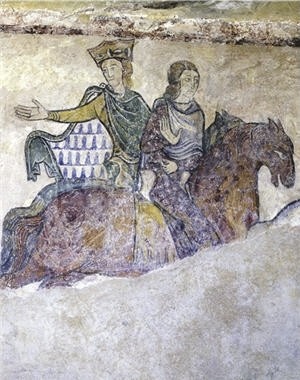
Source
Eleanor was one of the wealthiest and most powerful women in Western Europe during the High Middle Ages. As well as being Duchess of Aquitaine in her own right, she was queen consort of France 1137-1152 and queen consort of England 1154-1189. She was the patroness of such literary figures as Wace, Benoît de Sainte-More, and Chrétien de Troyes. Henry and Eleanor eventually became estranged. She was imprisoned between 1173 and 1189 for supporting her son Henry's revolt against King Henry II.
Justinian’s Corpus Iuris Civilis

Corpus Iuris Civilis was a collection of fundamental works in jurisprudence, issued from 529 to 534 by order of Justinian I, Eastern Roman Emperor. This code compiled, in the Latin language, all of the existing imperial constitutiones (imperial pronouncements having the force of law), back to the time of Hadrian. It used both the Codex Theodosianus and the fourth-century collections embodied in the Codex Gregorianus and Codex Hermogenianus, which provided the model for division into books that were divided into titles. These codices had developed authoritative standing.
Magyars

Source
Magyars were people from western Asia encouraged by the Byzantines to attack the Bulgers settled in modern day Hungary and made raids into western Europe. They were defeated by the Germans in the Battle of Lechfield and Christianized and founded the Kingdom of Hungar.
Thomas Aquinas’ Summa Theologica
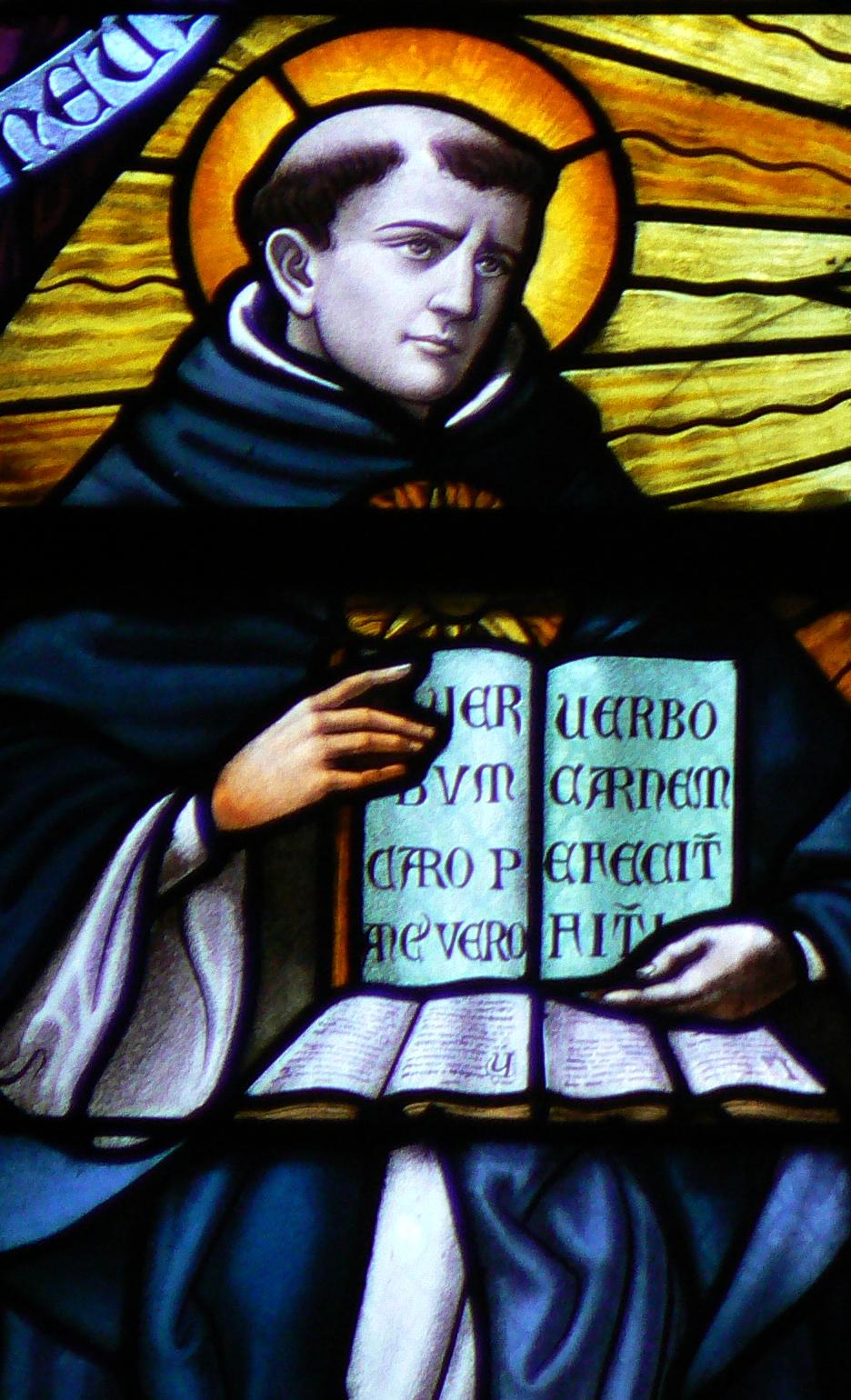
Source
Thomas wrote the Summa Theologica, in which 600 articles or issues were discussed, however it it was never finished. It was intended as a manual for beginners as a compilation of all of the main theological teachings of the time. It summarizes the reasoning for almost all points of Christian theology in the West, which, before the Protestant Reformation, subsisted solely in the Roman Catholic Church. The Summa's topics follow a cycle: the existence of God, God's creation, Man, Man's purpose, Christ, the Sacraments, and back to God. It is famous for its five arguments for the existence of God, the Quinquae viae (Latin: five ways).
Throughout his work, Aquinas cites Augustine of Hippo, Aristotle, and other Christian, Jewish and even Muslim and ancient pagan scholars. He found found no conflict between faith and reason.
Teutonic Knights

Source
Teutonic Knights were founded to protect the Christian Holy Land near the end of the 12th century. They attacked the Pagan Slavs in the early 13th Century seizing east Prussia in 1226.By the end of the 13th century, Prussia had become Christianized and German.
Peter Abelard and Helois
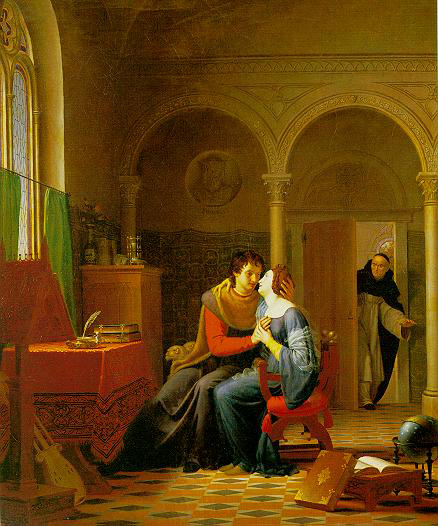
Source
Peter was a medieval French scholastic philosopher, theologian and preeminent logician. The story of his affair with and love for Héloïse has become legendary. The Chambers Biographical Dictionary describes him as "the keenest thinker and boldest theologian of the 12th Century".
Frederick I Barbarossa

The Third Crusade was also referred to as the King’s Crusade Led by Frederick I Barbarossa of Germany (who drowned), Richard the Lionhearted of England and Philip Augustus of France (caught fever and went home).
He was a strong ruler and was the first to call his empire the Holy Roman Empire. Friedrich was able to control the German princes, however in turn, the Lombard League formed by his enemies was meant to oppose him along with the pope.
Later Frederick returned and arranged a settlement where they retained their independence by paying annual payments to the emperor. His son Henry VI (1191-1197) married the heiress of the Norman kingdom of southern Italy. His greatest claim to fame was that he was dead set to have the strongest kingdom since Charlemagne died too soon.
Hugh Capet

Around 987 – 996 Hugh Capet was chosen when the Carolingian king Louis the Sluggard, count of Orleans and Paris, when he died in 987. When he was chosen, the counts assumed that he would be a weak king, and they wanted someone they could control. Hugh did not disappoint them nor did his sons and grandsons who followed. The Capetians would rule for 200 years 987-1180. Time and geography were on their side.
Interesting Reading
 Cities became divisive, merchants lost the economic advantages of safe environments for trade, and developments in learning suffered from the loss of a unified Roman Empire. The Church remained a powerful institution at the end of the Roman Empire. It was the constant unifying force between the many small kingdoms that appeared after the collapse. Read more about the Middle Ages By
Cities became divisive, merchants lost the economic advantages of safe environments for trade, and developments in learning suffered from the loss of a unified Roman Empire. The Church remained a powerful institution at the end of the Roman Empire. It was the constant unifying force between the many small kingdoms that appeared after the collapse. Read more about the Middle Ages By  As Feudalism was based upon the ownership of land, the nobility, who also monopolize military force, exerted a great deal of control on the rest of society. Given the fact that this caste controlled much of the economic and military resources of their time, it may seem illogical that they often willingly subjected themselves to the clergy. Read more about Feudalism: Nobles, Clergy, Merchants, and Serfs By
As Feudalism was based upon the ownership of land, the nobility, who also monopolize military force, exerted a great deal of control on the rest of society. Given the fact that this caste controlled much of the economic and military resources of their time, it may seem illogical that they often willingly subjected themselves to the clergy. Read more about Feudalism: Nobles, Clergy, Merchants, and Serfs By Based on the retrospectives and actions of the humanist writers and masterminds of the 15th and 16th centuries, there is evidence that the Renaissance was an era of climax in the Middle Ages. Those who viewed themselves as pioneers of this grand rebirth were greatly influenced by literature of the successful Greek and Roman Empire. Enlightenment Thinkers During the European Renaissance By Situated in the centre of the old town, the church known as the Collégiale is good example of the style of Gothic architecture that flourished in the Rhine valley in the late Middle Ages. The Cathedrals of Strasbourg and Freiburg in Germany are also built in a similar style.
Based on the retrospectives and actions of the humanist writers and masterminds of the 15th and 16th centuries, there is evidence that the Renaissance was an era of climax in the Middle Ages. Those who viewed themselves as pioneers of this grand rebirth were greatly influenced by literature of the successful Greek and Roman Empire. Enlightenment Thinkers During the European Renaissance By Situated in the centre of the old town, the church known as the Collégiale is good example of the style of Gothic architecture that flourished in the Rhine valley in the late Middle Ages. The Cathedrals of Strasbourg and Freiburg in Germany are also built in a similar style.
Collégiale Saint-Thiébaut
The building owes its name "La collégiale" to the college of monks who moved to Thann from the nearby town of Saint-Amarin in 1442. Construction of the collégiale tooke more than 200 years, from the end of the 13th Century into the 15th Century, and was completed in 1516 with the 78m tall spire.
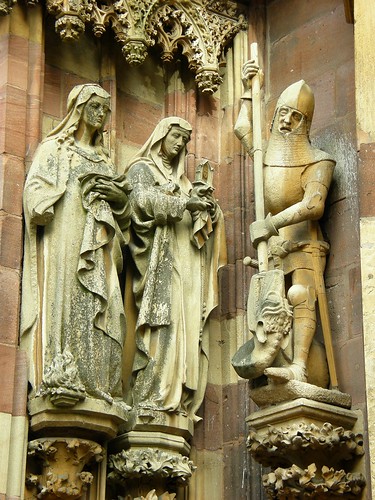
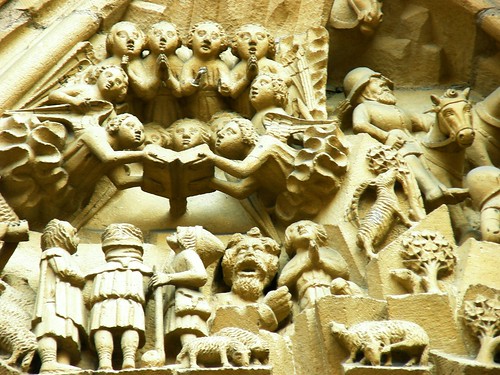
Porche de la Collégiale Saint-Thiébaut (détail du petit tympan droit)
Main entrance of the Collégiale Saint Thiébaut (detail)
Pictures compliments of OliBac







0 Comments:
Post a Comment
We appreciate comments, but we delete SPAM.